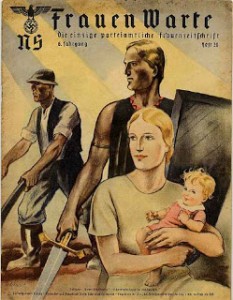“Eugenics is the science which deals with all influences that improve the inborn qualities of a race; also with those that develop them to the utmost advantage,” states Francis Galton in his article, Eugenics: It’s Definition, Scope, and Aims in July 1904. Eugenic ideas spread through out Europe following the First World War. While eugenics is supposed to be about race quality, it became prevalent in interwar Europe mainly due to fear, and the need to transfer blame.
In National Self-Sufficiency, John Maynard Keynes states that England’s vast trading network was “the explanation before man and the justification before Heaven of her economic supremacy.” This statement reflects the views of most European countries; their respective races were superiorto all others. After WWI, Europe began to lose control of its colonies. For example, the British were facing resistance to their rule in India. In addition to this, natives of those colonies were immigrating to the mother nations; there were Algerians in France and Chinese in England, to name a few. To nations that had been mainly of homogenous race up to this point, this immigration was a shock and an unwelcome change. Fear began to spread among whites of these people with different skin color, culture and language. Whites needed a way to establish themselves as the superior race and to keep their race pure. Thus, they turned to eugenics.
Not only was Europe physically destroyed by WWI, the global economic crisis of 1929 ruined its still weak economies. A general sense that someone needed to be blamed was felt through out the continent; who better to blame than these new races or less superior races within European nations? Especially in Germany, who shouldered the majority of the blame, according to the Treaty of Versailles, for WWI, this need was felt; the blame was placed mainly the Jews. During WWI, Jews held the majority of the seats in German parliament, and were the ones who agreed to a cease-fire. After the war, German officers came forward and said that they could have won if it weren’t for the armistice. This fueled hatred for the Jews. Eugenics became popular as a scientific way to justify this hatred. In this German eugenics propaganda poster, Germans are being told that they must take the burden for degenerates and those who are not as genetically fit. Taking these attitudes into account, it is not surprising that the Holocaust occurred.
Eugenics was a recognized science in Europe during the interwar period. Eugenists and those who supported eugenics were not extremists, but were close to mainstream thought. Eugenics was driven by fear and the search for an outlet for blame, and was itself an underlying factor in the Second World War.
source for picture: http://www.disabilityhistory.org/dd_camp2.html







